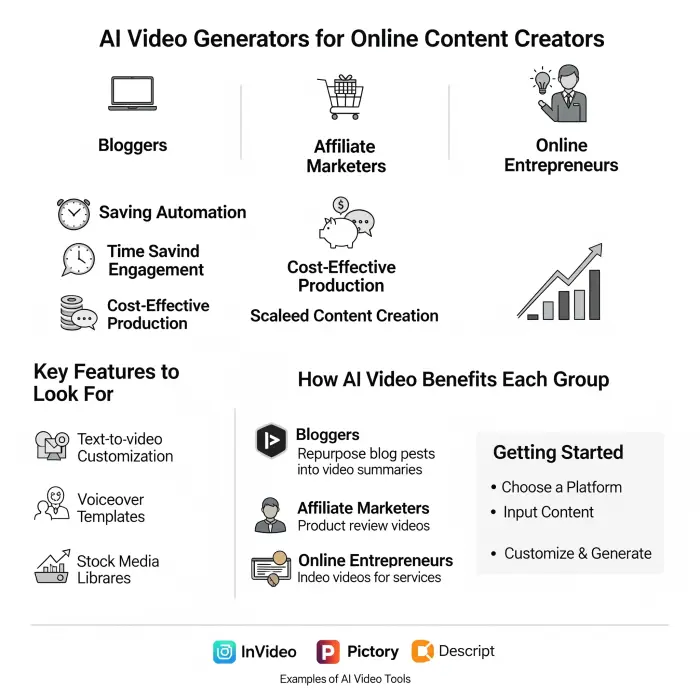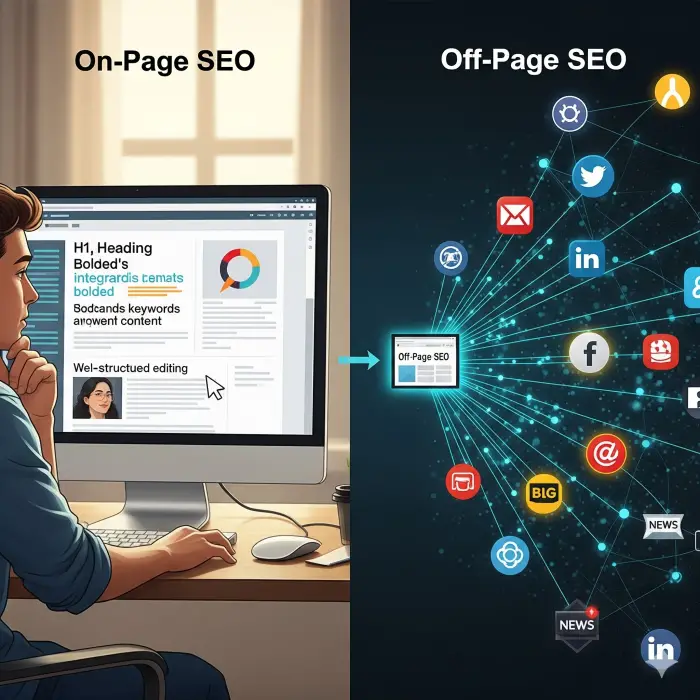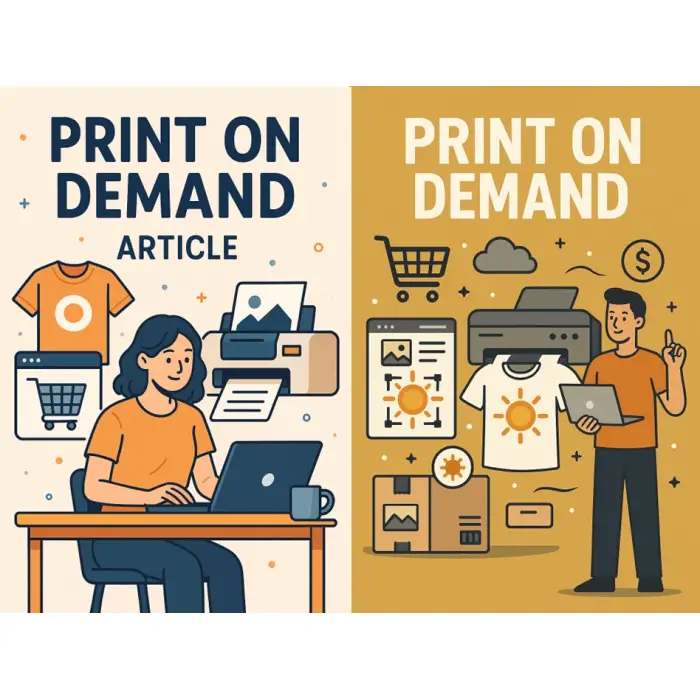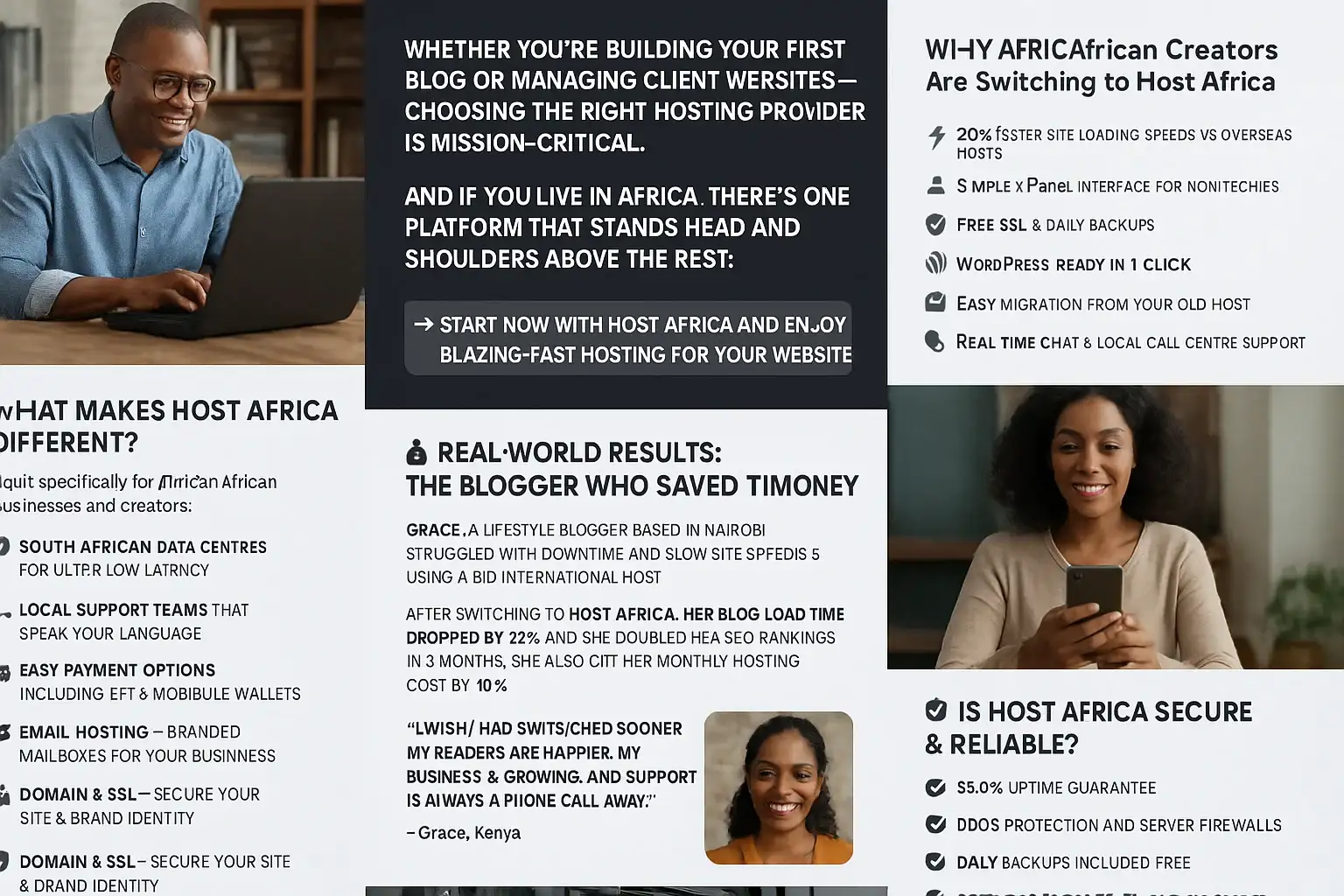Is Blogging Still Profitable in 2025?
Absolutely blogging is not only still profitable in 2025, but it's also evolving into one of the most sustainable and versatile online income streams. As digital consumption grows globally, blogs have maintained their authority as trusted sources of information, especially in niches like finance, health, technology, and education. While the digital content landscape has shifted with the rise of short-form videos and AI-generated content, the core strengths of blogging searchability, long-form value, and passive monetization make it a cornerstone of online business models today.
Here's why blogging remains highly profitable in 2025:
1. Evergreen Traffic Through SEO
Unlike social media content that disappears within hours, well-optimized blog posts continue to drive targeted traffic for months or even years. search engines like Google still favour long-form, helpful content that answers user intent. Bloggers who focus on search engine optimization (SEO), particularly through long-tail keywords and semantic search, are earning consistent revenue from organic visitors.
2. Diversified Monetization Channels
Bloggers in 2025 aren't limited to displaying ads. Most successful blogs monetize through a combination of:
- affiliate marketing: Recommending relevant products and earning commissions per sale or lead.
- Display Ads: Earning passive income through networks like Mediavine, Ezoic, and AdThrive.
- Digital Products: Selling eBooks, courses, printables, or software tools.
- Sponsored Content: Partnering with brands for paid reviews or content placement.
- email marketing: Building a list to drive conversions and product sales directly.
3. AI Has Increased Productivity, Not Replaced Blogging
With the advent of AI tools like ChatGPT, Jasper, and Surfer SEO, content creation has become faster, but the most profitable blogs still require a human touch personality, originality, niche authority, and unique experiences. Bloggers now use AI as a productivity booster, creating outlines, enhancing research, and polishing drafts, allowing them to scale content creation efficiently.
4. Lower Entry Barriers with Scalable Potential
Starting a blog in 2025 requires minimal upfront investment under $100 for a domain, hosting, and WordPress setup. Yet the upside is enormous. Top bloggers earn anywhere from $10,000 to $500,000+ per month. The scalability is unmatched: one blog post can bring in thousands of monthly visitors and generate income without continuous effort.
5. Niche Authority and Personal Branding
Audiences crave trustworthy voices. Blogs allow creators to build authority and trust in specific niches. Whether you're a dietitian, coder, digital nomad, or financial planner, a blog becomes your digital HQ the foundation for books, online courses, memberships, or consulting services. Most high-earning solopreneurs in 2025 leverage a blog as their primary brand-building tool.
6. Global Growth in Online Readership
In 2025, over 5 billion people are connected to the internet. With digital literacy and content consumption rising in emerging markets (India, Africa, and Southeast Asia), there's an ever-expanding global audience. Bloggers who localize or niche down for underserved audiences stand to profit enormously as regional traffic grows.
Bottom Line: Blogging is not dead it has matured. It's no longer just about diary-style writing. It's about solving problems, creating value, and building systems that earn passively. Whether you're a side hustler, freelancer, or entrepreneur, blogging remains a highly profitable digital asset in 2025 and arguably more valuable than ever before.
Is Blogging Still Profitable in 2025?
Earnings Timeline
- 612 months to $1,000/month
- 3050 posts to start earning
- Multiple income streams: ads, affiliates
Earnings per 1,000 Views
- google adsense: $2$5
- Mediavine: $20$40
- Affiliate Marketing: $20$100+
Best Niches to Blog
- Finance & Investing
- Health & Fitness
- Tech Reviews & Tutorials
- Marketing & SEO
Start your blogging journey today it's still a proven path to success!
Why Blogging Is Still Worth It:
- Low Start-up Costs: Unlike traditional businesses that require large capital investments, blogging offers one of the lowest barriers to entry. For under $100, you can purchase a domain name, secure reliable web hosting, and install a CMS like WordPress. Many tools like free themes and plugins allow beginners to build a professional-looking blog without needing to hire developers or designers.
- Multiple Income Streams: Blogging isn't limited to one revenue source. A single blog post can earn money through:
- Display Ads via platforms like Google AdSense or Mediavine, earning revenue based on impressions or clicks.
- Affiliate Marketing, where bloggers recommend products and earn commissions from sales.
- Sponsored Posts and brand collaborations, especially in niches like beauty, tech, or finance.
- Digital Products such as online courses, eBooks, templates, and premium newsletters.
- Consulting and Coaching opportunities, especially for bloggers who establish themselves as niche authorities.
- Evergreen Content: High-quality blog content optimized for search engines can continue to drive targeted traffic and generate income for years after it's published. For example, a well-written tutorial, product review, or informational guide can consistently rank in Google search results and attract new readers month after month without ongoing work. This long-tail potential makes blogging uniquely powerful compared to time-sensitive social content.
- Scalable business model: Blogging starts small but scales big. Every new piece of content adds to your traffic potential. As your blog grows, so does your authority, backlink profile, domain strength, and monetization capacity. You can outsource writing, automate promotion with tools, build a team, or repurpose content into videos, podcasts, and products. This scalability allows bloggers to transition from part-time hobbyists to full-time entrepreneurs with six- or even seven-figure businesses.
How Long Does It Take to Make $1,000 Per Month Blogging?
Earning $1,000 per month from blogging is an achievable milestone for many new bloggers, but it typically takes 6 to 12 months of consistent effort. Success depends on factors such as niche profitability, the quality and quantity of content, SEO strategy, promotional efforts, and how early monetization methods are implemented.
| Time Frame | Milestone | Description |
|---|---|---|
| Month 13 | Setup Phase | Research and select a high-earning niche, purchase a domain and hosting, install WordPress, and begin creating foundational content. Early blog posts should focus on addressing core audience problems and keyword research . |
| Month 46 | Growth Phase | The focus shifts to traffic generation. Implement a basic SEO strategy (on-page and off-page), start building backlinks through guest posts and collaborations, improve site speed and UX, and grow your email list or social presence. |
| Month 712 | Monetization Phase | With a decent volume of traffic (3K10K visitors/month), start earning through Google AdSense, affiliate partnerships (like Amazon Associates, ShareASale, or niche-specific programs), and by launching simple digital products (eBooks, checklists, printables). |
Pro Tip: To hit your income goals faster, aim to publish 35 SEO-optimized blog posts per week. Prioritize content targeting buyer intent keywords and long-tail searches to drive highly convertible traffic.
Remember, blogging is a long-term game. While some niches (like finance or software) may yield faster earnings, consistency, smart content strategy, and audience trust are the real drivers of sustainable blog income.
How Much Money Is 1,000 Views on a Blog?
The amount you can earn from 1,000 blog views varies widely depending on your monetization strategy, niche profitability, and the quality of your traffic. While some bloggers may earn just a few dollars, others in high-value niches can generate over $100 from the same traffic volume.
| Monetization Type | Estimated Earnings (per 1,000 views) |
|---|---|
| Google AdSense | $2 $5 |
| Mediavine (Premium Ad Network) | $20 $40 |
| Affiliate Marketing | $20 $100+ |
Ad networks like Google AdSense offer entry-level monetization, ideal for new bloggers, but typically deliver lower RPMs (Revenue Per Mille). Once your blog reaches 50,000+ monthly sessions, you can apply for higher-paying networks like Mediavine or AdThrive, which significantly boost your earnings.
Affiliate marketing can be the most lucrative monetization method, especially if your content targets high-intent keywords. For example, a review of a software tool or financial product can generate commissions ranging from $10 to $200 per conversion, making it possible to earn $100+ per 1,000 visitors.
Maximize your RPM by targeting high-value niches such as:
- Finance: Credit cards, investing, personal loans, budgeting tools
- Health: Supplements, fitness programs, mental wellness apps
- Software Reviews: SaaS tools, business automation, AI platforms
- Education: Online courses, certifications, e-learning platforms
Ultimately, blogging success isn't just about traffic it's about monetizing the right traffic. Focus on audience intent, content relevance, and conversion optimization to grow your income exponentially from each visitor.
Do Beginner Bloggers Make Money?
Absolutely, beginner bloggers can and do make money, often within their first year of consistent effort. While blogging income rarely skyrockets overnight, with the right niche selection, valuable content creation, and focused SEO strategies, new bloggers can start seeing tangible earnings and build a foundation for long-term growth.
Common Beginner Earnings Timeline:
- Months 13: $0$100 This initial phase is about setting up your blog, researching your niche, and publishing foundational content. Traffic is usually low as search engines begin indexing your site, but early visitors might come from social media, friends, or forums.
- Months 46: $100$500 As your SEO efforts start to pay off, you'ii see a steady increase in organic traffic. Early monetization strategies like Google AdSense, basic affiliate links, and sponsored posts can start generating some income.
- Months 712: $500$1,500+ With consistent publishing, improved domain authority, and growing email subscribers, traffic and revenue tend to accelerate. Many beginner bloggers expand into higher-paying affiliate programs, create digital products, or offer services.
Key Insight: Most beginners underestimate the power of diversified monetization. Relying solely on display ads limits income potential. Instead, integrate affiliate marketing, and sponsored content, and build an email list to nurture relationships and promote products or services.
Additionally, beginners who focus on creating high-quality, problem-solving content that targets specific audience needs tend to rank faster and attract more engaged visitors. Pairing this with effective SEO, social sharing, and networking accelerates growth and monetization.
Remember: Blogging is a marathon, not a sprint. Patience, persistence, and continuous learning are the pillars of beginner blogging success.
Which Platform Is Best for Blogging in 2025?
In 2025, WordPress.org continues to dominate as the best blogging platform due to its unmatched flexibility, powerful SEO capabilities, and extensive plugin ecosystem. Whether you're a beginner or an experienced blogger, WordPress.org offers the tools needed to grow your blog into a scalable online business.
| Platform | Pros | Cons |
|---|---|---|
| WordPress.org |
|
|
| Medium |
|
|
| Ghost |
|
|
Choosing the right platform depends on your goals:
- If you want full control, scalability, and advanced SEO, WordPress.org is the top choice.
- If you prefer simplicity, ease of use, and a built-in community, Medium can be a good starting point.
- If you want a clean, modern platform with built-in subscription features, Ghost offers an elegant solution.
For bloggers serious about long-term growth and monetization, investing time in learning WordPress.org and hosting your own site is highly recommended in 2025.
What Blogs Make the Most Money?
In 2025, certain blog niches consistently outperform others in revenue generation due to strong advertiser demand, high-value audiences, and evergreen content opportunities. Here are the most profitable blog niches today:
- Finance: personal finance blogs focusing on credit cards, investing, loans, budgeting, and cryptocurrency attract highly valuable audiences. Advertisers pay premium rates for clicks and leads in this niche, driving affiliate commissions and ad revenue sky-high.
- Health & Wellness: Topics such as weight loss, fitness routines, dietary supplements, mental health, and holistic wellness have massive audiences seeking solutions. Monetization includes affiliate sales of supplements, online courses, and partnerships with health brands.
- Technology: Blogs reviewing the latest gadgets, software tutorials, programming guides, and tech news benefit from passionate, tech-savvy readers. Affiliate programs for electronics and software subscriptions fuel high earnings.
- digital marketing : Niches covering SEO strategies, email marketing, sales funnels, content marketing, and social media attract entrepreneurs and marketers with strong purchasing power. Monetization often involves high-ticket affiliate programs, consulting services, and digital product sales.
- Lifestyle: Blogs about DIY projects, home décor, parenting tips, and sustainable living engage loyal audiences. Monetization opportunities include sponsored posts, brand collaborations, and affiliate partnerships with lifestyle brands.
- Travel: Destination guides, budget travel tips, van life adventures, and travel gear reviews captivate wanderlust-driven readers. Monetization comes from affiliate commissions on travel gear, booking referrals, and sponsored trips.
High-performing blogs in these niches often generate $10,000 to $100,000+ per month by leveraging multiple income streams such as:
- Affiliate marketing: Promoting products and earning commissions on sales or leads.
- Ad revenue: Using premium ad networks like Mediavine or AdThrive that pay high RPMs.
- Digital products: Selling eBooks, courses, memberships, or exclusive content.
- Sponsorships and brand deals: Partnering with companies to promote their products or services.
Ultimately, the most successful blogs combine expert-level content, targeted traffic strategies, and diverse monetization models to maximize earnings sustainably in 2025.
Final Thoughts: Should You Start a Blog in 2025?
Absolutelyif you are willing to approach blogging with a business mindset and consistent effort. While blogging is not a shortcut to overnight riches, it remains one of the most accessible and scalable ways to build a sustainable online income.
Quick Takeaways:
- Blogging is still highly profitable in 2025: With the right strategies, blogs can generate significant revenue through diverse income streams.
- Expect patience: Most bloggers reach a consistent $1,000 per month within 6 to 12 months, depending on niche and work ethic.
- Monetization is flexible: Earnings per 1,000 views vary widely from $2 to $100+, influenced by niche, audience quality, and monetization methods.
- Choose WordPress.org: Its flexibility, SEO advantages, and vast plugin ecosystem make it the best platform for growth and control.
- Focus on profitable niches: Finance, health, tech, and marketing niches offer the highest earning potential due to advertiser demand and audience engagement.
Starting a blog in 2025 requires dedication, continuous learning, and adapting to trends, but with persistence, it offers one of the most rewarding and profitable digital business opportunities available today.
FAQs
Is blogging better than YouTube in 2025?
Both platforms have unique advantages. Blogging excels at building long-term SEO authority and generating passive income through evergreen content. YouTube, on the other hand, is ideal for rapid audience growth, brand building, and engaging visual storytelling. The best approach often combines both to maximize reach and monetization.
Do I need to be a great writer?
Not necessarily. What matters most is delivering valuable, well-researched content that addresses your audience's needs. You can enhance your writing with tools like Grammarly, Hemingway Editor, or AI-powered editors to improve clarity, grammar, and flow.
How many posts before I see income?
Income typically starts flowing after publishing 3050 well-optimized posts focused on low-competition keywords. Consistency and quality are keyregular publishing combined with SEO and promotion accelerates monetization.















Comments